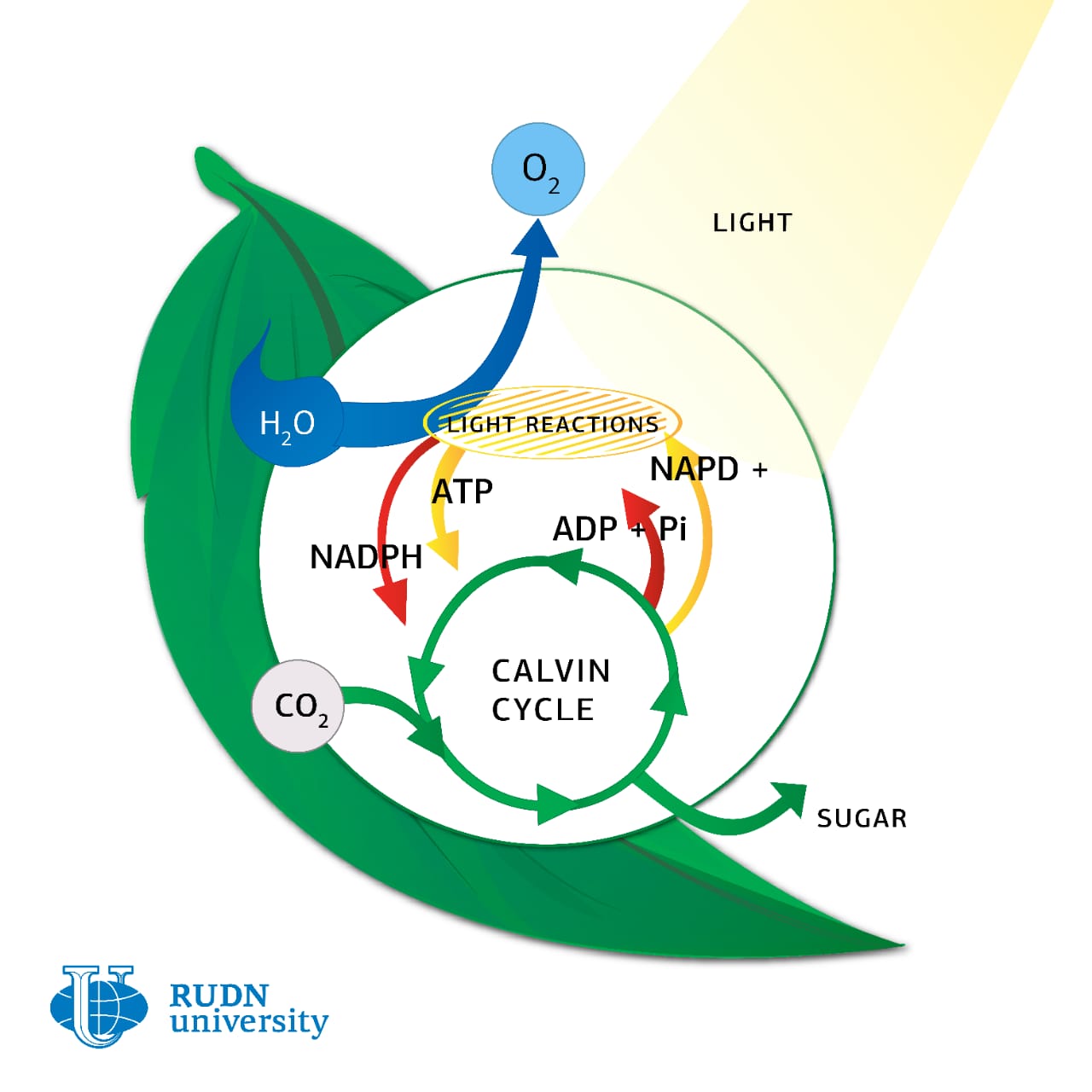RUDN University biologist developed new model for analyzing photosynthesis in vivo
Measurements of the efficiency of photosynthesis in living systems are necessary because they allow us to estimate the carbon cycle, and therefore the impact on the climate. To study photosynthesis in vivo, the vegetation absorption coefficient is used – a value that shows how deep the incident radiation penetrates the canopy. It depends on biochemical, structural and external factors, so its evaluation is very difficult. Alexei Solovchenko, an employee of RUDN University, and his colleagues from the USA and Israel have found a new way to assess this indicator.
First, biologists calculated the ratio of absorption and transmission coefficients for individual leaves and canopy in general. Measuring these coefficients for the canopy “in sum” is difficult, but for a single leaf it is simple, so knowing the ratio between them, you can calculate the absorption and transmission of canopy, knowing the coefficients for a single leaf. Then the researchers of RUDN University obtained an equation that connects the canopy absorption coefficient to the pigments absorption coefficient – primarily chlorophyll – in leaves. It turned out that the canopy, unlike a single leaf, can absorb light in the infrared range, and also, the absorption coefficients of pigments for plants with different densities of canopy, may differ. Therefore, biologists had to make appropriate changes to the final model.
The researchers tested this mathematical model describing the canopy absorption coefficient on crops with different types of photosynthesis – corn (C4 photosynthesis), soybeans and rice (C3 photosynthesis), measuring the spectra of absorbed and reflected solar radiation.
The model showed that in the blue spectral region, the canopy of rice reflects more than the canopy of other crops. Scientists believe it is because rice grows in water. Also, absorption curves for plants with C3 type of photosynthesis (soybeans and rice) obtained with the model differed from those of plants with C4 type of photosynthesis (corn), due to biochemical differences.
Thus, the model created by biologists can "predict" the absorption of light by different types of plants with different types of photosynthesis, different canopy architectures and different pigment content in the leaf.
The article is published in the journal Remote Sensing of Environment.
Sergey Ivanov, a scholar from St. Petersburg, has been named the first winner of RUDN University’s International Prize for Scientific Achievements in Mathematics, worth 5 million rubles.
Products derived from microalgae represent a cutting-edge development in the field of bioeconomy. The potential of this biological resource was discussed at the international research seminar “Foundations for a Green Sustainable Energy”, part of the BRICS Network University’s thematic group on “Energy”. The event was organized by the Institute of Ecology at RUDN University.
Ambassadors of Russian education and science met at a conference in RUDN University to discuss how they can increase the visibility of Russian universities and research organizations in the world, and attract more international students in Russia.
